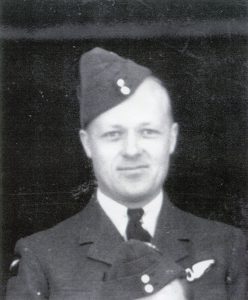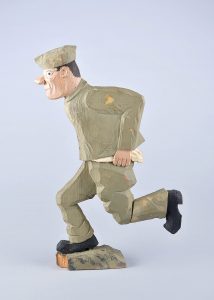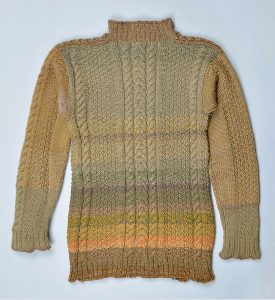Diary of a Canadian Prisoner of War
John Colwell
Most of us live lives that are pretty far removed from the realities of a soldier, and even fewer of us understand what it means to be a soldier held captive behind enemy lines. John Colwell, while a prisoner of war during World War 2, kept a diary that gives us a peek into the life of an imprisoned soldier.
Originally born in India, Colwell came to Canada at 16 with his parents. They settled on a farm in Extension, B.C., south of Nanaimo. In 1940, Colwell joined the Royal Canadian Air Force (RCAF) as a navigator. 3 years later in April 1943, his plane was shot down over Holland during a bombing run.
Captured and Held Captive in Germany
That fateful April, Colwell was captured by the Germans. Kept in a prisoner of war (POW) camp, Stalag Luft III in Sagan, Germany (now Poland), he wrote a diary of his time as prisoner behind enemy lines. His diary, which he wrote in a YMCA logbook, has survived and gives insight into how he spent his time.
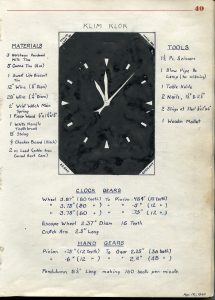
A page from John Colwell’s diary he kept in a YMCA logbook. Ink on paper, 15.2 x 20.3 cm, April 12, 1944.
Colwell, the Camp’s “Tin basher”
Colwell could apparently make anything needed out of the materials at hand and was known as the camp’s principal “tin basher.” His most readily available source of metal was tin from the Klim cans of powdered milk, which came in the Red Cross packages.
Colwell used these Klim (milk spelled backwards) cans to make a working stove, coffee pots, cups, kettles and any other implements the camp needed. He even made a functioning artificial leg for a fellow POW and at least three working clocks, none of which survived the war.
The drawings and plans as well as stories about the clocks and his other inventions have survived. Colwell’s diary entries indicate he first started on a clock on December 1, 1943, and by January 3, 1944, the clock was running. On April 11, 1944, he entered one of his clocks in the camp’s Arts and Crafts Show. These clocks had working gears and weights filled with sand that could be adjusted to keep the time accurately.
An Attempted Escape
At Stalag Luft III POW camp in Sagan, Germany, captive prisoners were planning an escape. In fact, the infamous attempt was later made into a Hollywood movie called The Great Escape.
This feat to escape from a German prisoner of war camp was led by RCAF Flight Lieutenant Clark Wallace “Wally” Floody, a native of Chatham, Ontario. His experience in the mining industry at Kirkland Lake, Ontario, prepared him for this task.
The detailed, complex operation involved digging out three tunnels (“Tom”, “Dick” and “Harry”) while gathering a vast amount of material and equipment from the camp. Colwell was a “penguin” in this operation, meaning he moved sand out of the tunnels, hid it in his clothes, and scattered it throughout the camp.
Colwell’s diary entries are chillingly brief during that time. In his diary he only recorded the items he was making during the attempt, and the tragic events following the escape. On March 25, 1944, the attempted escape was discovered. On April 5, 1944, forty seven prisoners were executed for their attempts. During that time, Colwell listed that he made a baking pan, slippers, round pot, and a potato masher in exchange for cigarettes. Nothing more was shared.
Following the war, Colwell and his wife (Fern) took over the family poultry farm on near Lantzville on Vancouver Island. In August 2002, he donated his diary to the Comox Air Force Museum.
Recording History Beyond Diary Entries
Colwell’s diary entries are not the only documents which give us insight into the lives and views of prisoners of war. Other prisoners produced drawings, illustrations or cartoons of life in the camps.
One prisoner produced a group of woodcarvings showing specific guards and prisoners in humorous positions. One such example depicts a guard running along while pulling up his pants.
Humour plays an important role in boosting morale during wartime. Prisoners in German camps used craft materials not only to pass their time, but also to express a sense of how they understood, interacted or even laughed at their situations.
Difficult Times for Canadian Soldiers
Canadian soldiers captured by German forces during the Second World War lived in much more difficult conditions than the German soldiers who were captured by Canadian forces. As Germany began to feel the strain of fighting a war on many fronts, supplies became scarce. The resources they had to feed, house and guard the prisoners were stretched thin- let alone anything to entertain the prisoners.
In many cases, at the end of the War, Canadian prisoners walked, without food or adequate clothing, from their camps in East Germany towards West Germany. Since their living conditions were so difficult, objects made by Canadian prisoners of war are rare. Everything they owned needed to be carried out with them from the camp on foot. Many items were lost in the confusion of leaving Germany at the end of the War.
Canadian Handiwork: Survival in POW camps
Most of what Canadians made were items for survival in the camp. Proof that these objects once existed was often shown in the drawings they made in diaries that were given to record their experiences in captivity.
Other objects included pieces of clothing made to replace worn out garments after years of wear in the camps. These pieces of Canadian prisoner-of-war craft only exist today because they could be worn on the way home.
Prisoners of war on both sides lived restricted and isolated lives, so anything they made came from whatever scarce materials were around. The objects they made show a lot about the conditions they lived in. Since Canadian soldiers held in Germany suffered harsher conditions than Germans held in Canada, the objects they made were rare and created for practical needs. Each prisoner’s situation was unique and their handcrafted objects reflect these differences.
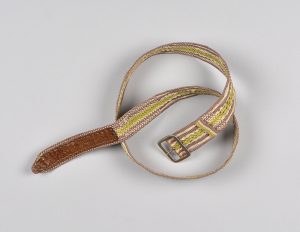
A woven belt made by Lieutenant Bryce Douglas while a Prisoner of War during the Second World War. Cotton, leather and metal, 93.6 x 4.1 cm.
Though Colwell’s experiences and attempted escape show the ultimate resourcefulness and tenacity of allied soldiers, life in the camps was not lived in a fever pitch of heroism. His diary gives an interesting insight into how daily life in prisoner camps was filled largely with monotony, ordinariness, and the need to just survive.
In 2002, Colwell donated his diary to the Comox Air Force Museum.
If you would like to see more trench art and other Canadian war-related craft, click here.


